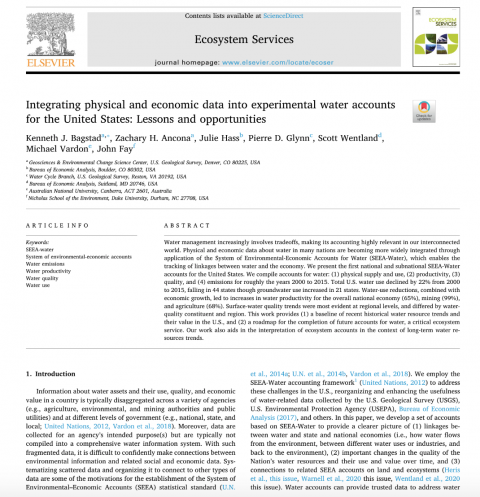Ecosystem Services: Integrating physical and economic data into experimental water accounts for the United States: Lessons and opportunities

Document Summary:
Water management increasingly involves tradeoffs, making its accounting highly relevant in our interconnected world. Physical and economic data about water in many nations are becoming more widely integrated through application of the System of Environmental-Economic Accounts for Water (SEEA-Water), which enables the tracking of linkages between water and the economy. We present the first national and subnational SEEA-Water accounts for the United States. We compile accounts for water: (1) physical supply and use, (2) productivity, (3) quality, and (4) emissions for roughly the years 2000 to 2015. Total U.S. water use declined by 22% from 2000 to 2015, falling in 44 states though groundwater use increased in 21 states. Water-use reductions, combined with economic growth, led to increases in water productivity for the overall national economy (65%), mining (99%), and agriculture (68%). Surface-water quality trends were most evident at regional levels, and differed by water-quality constituent and region. This work provides (1) a baseline of recent historical water resource trends and their value in the U.S., and (2) a roadmap for the completion of future accounts for water, a critical ecosystem service. Our work also aids in the interpretation of ecosystem accounts in the context of long-term water resources trends.
Link to an External Document:
